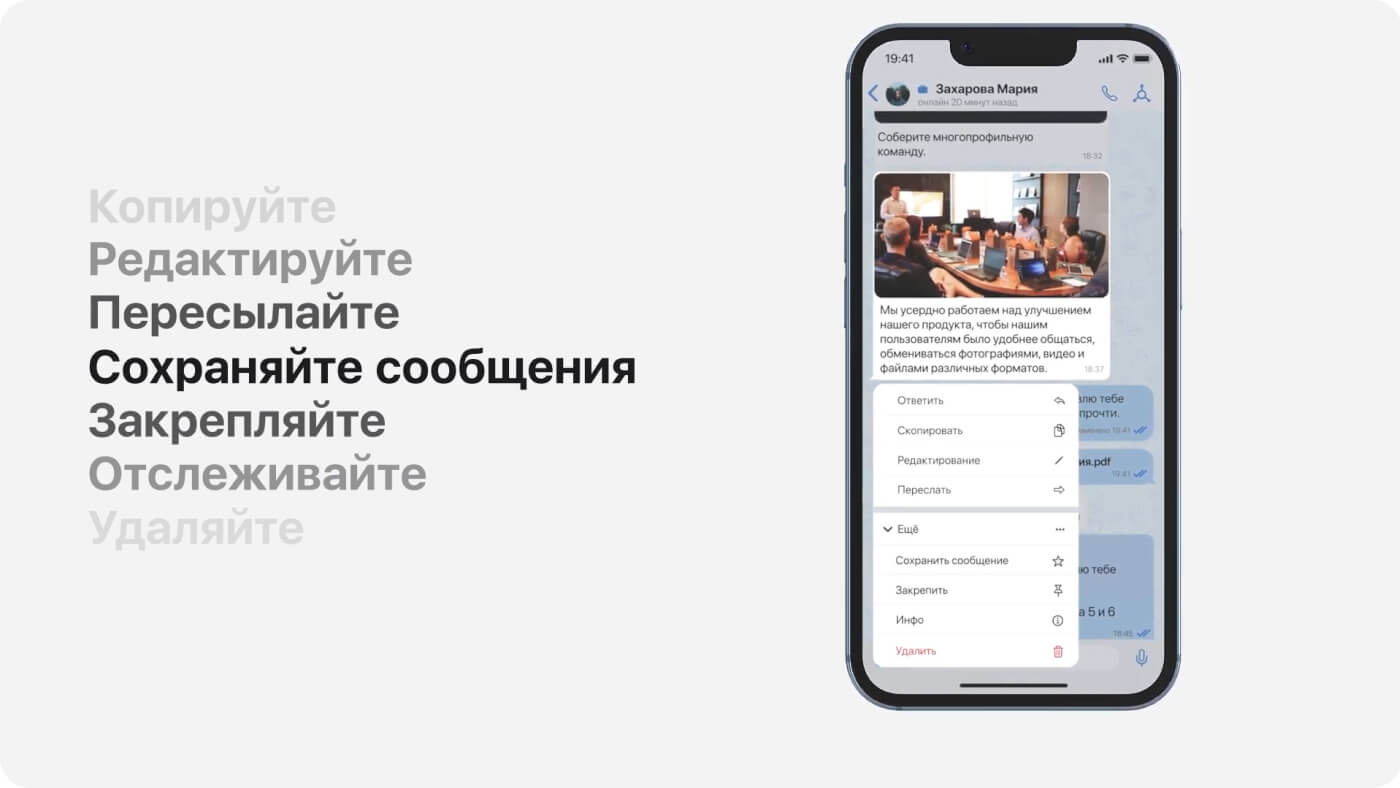
A corporate messenger is a convenient tool for HR specialists. It helps speed up communication, organize processes, and create a single space for employee interaction. Proper organization of work chats in the messenger makes HR processes transparent and efficient.
Let's look at what chats the HR department needs, how to organize them correctly, and what messenger functions will help make the team's work more convenient.
Why are work chats important for HR professionals?
The HR department interacts with candidates, employees, managers, partners on a daily basis. Without a clear communication system, processes can be delayed, information can be lost, and approvals can take too long.
A corporate messenger solves these problems:
- Reduces the time for communication and approvals.
- Makes discussions transparent, saves the message history.
- Helps to quickly respond to employee requests.
- Simplifies the adaptation of new employees.
- Unites the HR department in a single information space.
What chats help HR specialists?
1. Onboarding chat
This chat is designed for new employees. It helps them get used to the company faster.
What to post in the chat?
- A welcome message from HR or a manager.
- Instructions for completing documents and starting work.
- Contacts of responsible persons.
- Video tutorials, presentations, regulations.
Pros:
- Quick adaptation of employees.
- Minimization of questions to HR.
- A clear understanding of the first steps in the company.
2. Chat for adaptation
Differs from the onboarding chat in that employees are added here during the probationary period. Here, HR monitors the adaptation and collects feedback.
What can you do in this chat?
- Send reminders about key stages of adaptation.
- Give checklists and recommendations.
- Ask employees to share difficulties.
- Organize mini-surveys.
Pros:
- Employees feel supported.
- HR tracks the dynamics of adaptation.
- The probability of dismissal in the first months is reduced.
3. Chat for CV approval
In this chat, HR interacts with managers and hiring managers.
How to organize the work?
- Send candidates' CVs with brief comments.
- Use reactions (e.g., "like" = approved, "question" = discussion required).
- Include managers who participate in the selection.
Pros:
- Speed up decision-making.
- Reducing the workload on HR.
- Eliminating information loss.
4. Chat for internal training
This chat is needed to share knowledge within the company.
What can be published?
- Links to webinars, courses, training articles.
- Announcements of trainings and seminars.
- Recommendations for developing competencies.
Pros:
- Development of corporate culture.
- Improving employee qualifications.
- Creating a knowledge base within the company.
5. Chat for corporate news
The company's main information channel.
What materials can be posted?
- Official company announcements.
- Changes in corporate policies.
- Congratulations on achievements and holidays.
Pros:
- All employees are aware of important events.
- Fewer questions for HR and management.
- Formation of a unified corporate environment.
6. Chat for the HR team
Closed chat for communication between HR specialists.
What to discuss?
- Questions on personnel records and recruitment.
- Preparation of corporate events.
- Interaction with other departments.
Pros:
- Clear planning of the HR department's work.
- Reduced workload on internal meetings.
- Simplification of document flow.
How to organize work chats?
1. Create a clear structure
All work chats should have clear names, for example:
- HR | Onboarding
- HR | Employee adaptation
- HR | Resume approval
- HR | Internal training
2. Separate chats by purpose
Do not mix topics. For example, an onboarding chat should not duplicate adaptation, and news should not be discussed in the general HR chat.
3. Define the rules of communication
In each chat, write down what it is for, what topics are discussed and how you can respond to messages.
4. Use the messenger functionality
- Tags and threads - for easy navigation.
- Pinned messages - for important announcements.
- Reminders - for timely notifications.
Which corporate messenger to choose?
For HR specialists, it is important that the messenger is:
- Safe – protects employees’ personal data.
- Convenient – allows you to quickly find the information you need.
- Functional – supports video calls, tags, reactions.
One of the best solutions is eXpress. This is a corporate messenger, which is already used by Russian Railways, Norilsk Nickel and other large companies.
Advantages of eXpress:
- Reliable data protection.
- Video conferences for 250+ participants.
- Built-in corporate services.
- Support for threads, reactions, tags.
Conclusion
Work chats are a powerful tool for HR. They help automate processes, speed up employee adaptation, and make the team work more efficiently. The main thing is to organize chats correctly and choose a reliable corporate messenger.
If your company does not yet use a corporate messenger, try eXpress - it will help create a convenient and secure communication system within the HR department and the entire company.





